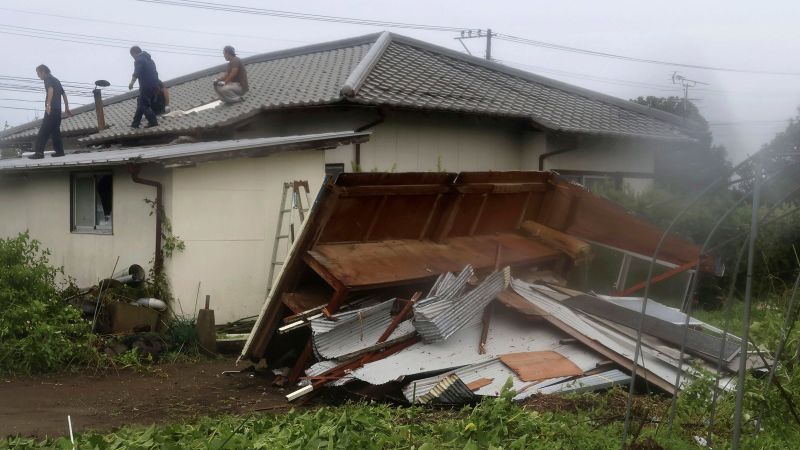
Japan urges 1 million to evacuate as lumbering Typhoon Shanshan threatens south with up to a meter of rain
More than 1 million people in southern Japan have been urged to evacuate as Typhoon Shanshan made landfall Thursday, leaving thousands of residents without power and lashing Kyushu island with gusty winds, torrential rain and dangerous storm surges.
The Japan Meteorological Agency issued a rare emergency warning for the storm, saying it was expected to bring damaging flooding and landslides to most of Kyushu, the country’s southernmost main island.
Japanese authorities on Thursday warned that a “life-threatening situation” was imminent for towns in Kyushu’s Oita prefecture and called on a further 57,000 people to evacuate and take “live-saving actions” as it issued its highest typhoon alert.
The center of the storm is now about 70 kilometers (40 miles) north of the city of Kagoshima after hitting the mainland with windspeeds of up to 185 kph (115 mph).
Video from Miyazaki, close to where the storm made landfall, showed downed electricity pylons and roads strewn with tree branches and other debris.
Shanshan weakened ahead of landfall but it’s dumping huge amounts of rain onto the island as it crawls north at 13 kph (8 mph). Slower storms can be more destructive, with strong gusts or rainstorms that pound the same areas for hours or days.
Already, rainfall has reached 0.5 meters (20 inches) in many areas and forecasters say totals could reach as high as 1 meter (40 inches) across some isolated and hilly regions.
More than 255,150 households on Kyushu were without power Thursday morning, according to Kyushu Electric Power.
And Japan’s two largest carriers, Japan Airlines and All Nippon Airways (ANA), announced more than 400 flight cancellations ahead of the storm.
Shanshan is expected to turn to the east and move through Kyushu, weakening to a tropical storm by the end of Thursday.
It will continue to move slowly over Japan’s southwest, before crossing into more central regions through the weekend and even into early next week, as a much weaker storm.
The main threat across the rest of Japan will continue to be widespread significant rainfall, with some areas in Shikoku and Honshu expected to see above 0.5 meters (20 inches).
